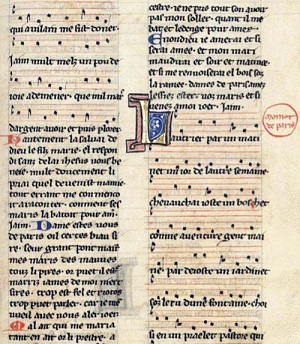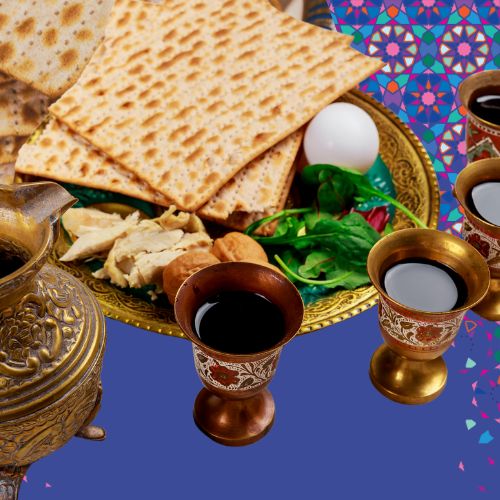
by Hervé Roten
When we talk about “Middle Ages”, we usually mean a time period in Europe that starts in the 5th century with the fall of the Western Roman Empire, and that ends in the 15th century with the Renaissance and the great discoveries. During this long period of a thousand years, we find traces of Jewish communities in Orient as well as in Occident.

We have no musical score of this period (Jewish people didn’t write the music), apart from three fragments of nematic notations dating from the 13th century. These documents of great value have been written by Abdias the Norman proselyte. This descendant of a noble family from Normandy, destined to be clerk, probably learned nematic notation in a monastery. Attracted to Judaism, he converts in 1102; he then lived in various Eastern Jewish communities (Babylonia, Syria, Palestine) until 1121. We then find him in Egypt where he goes to the ancient synagogue Ben Ezra of Fostat, situated today in the suburbs of Cairo. It’s in this synagogue’s genizah that was found in 1918, and in 1965, two booklets coming from a collection of synagogal chants and containing the musical notation of a biblical cantilation, as well as two piyyutim. These two poems, Mi al hah h’orev and wa-eda mah, may have been written by Abdias himself. They are written in the Western monodic singing style from the Middle Ages. The cantilation Baroukh Haguever contain five biblical verses, and is typical of an ancient musical tradition as this melody has been kept until nowadays in the oral tradition of Eastern Jewish communities of Syria, Djerba and in Italy.

In the 13th century, in the North of France, the songs of Jewish communities used various tunes from the minstrels songs. Oïl language and Hebrew were mixed together, in particular in religious poetry (piyyutim), and in wedding or circumcision songs.
Various researches led to the discovery of Hebrew manuscripts of some of these songs, of which two of them at least had in their margin the name of the minstrel song written. (See the booklet of the CD Juifs et Trouvères)
In the Iberian Peninsula, many Jewish musicians were employed in various courts of Christian or Arab dignitaries. The Christian kings of Spain had a high esteem of Jewish musicians: the courts accounts between the 14th and 16th centuries show they were quite rather well payed.
Even if there is very little of this history of medieval Jewish music, a few testimonies show that yesterday’s Jewish people were not as different as today’s: they liked music, played it sometimes professionally, in the profane field as well as the religious one.
Order the CD Juifs et Trouvères
Watch excerpts from the show : La source de vie, At the time of the minstrels
Listen to the playlist : Medieval Jewish music



